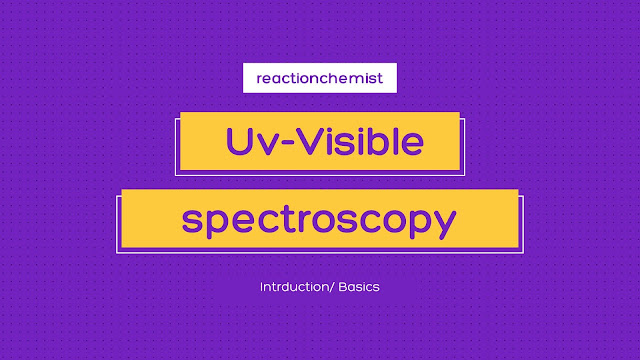UV-visible spectroscopy is a technique that is used to identify molecules by their absorbance of ultraviolet (UV) or visible light. This type of spectroscopy can be used to study the structure of molecules, their electronic properties, and their interactions with other molecules.
Spectroscopy is a powerful analytical tool that can be used to identify and quantify molecules in solution. In this blog post, we'll provide a comprehensive guide to understanding and using this technique.
Introduction to UV visible spectroscopy
UV visible spectroscopy is a technique used to study the interaction of UV and visible light with matter. This type of spectroscopy can be used to study the electronic and vibrational properties of molecules, as well as to investigate the structure of materials.
UV visible spectroscopy is a powerful tool for characterizing the electronic and vibrational properties of molecules. In addition, UV visible spectroscopy can provide information about the structure of materials.
The electromagnetic spectrum and UV rays
The electromagnetic spectrum is the range of all possible frequencies of electromagnetic radiation. The spectrum includes radio waves, microwaves, infrared radiation, visible light, ultraviolet radiation, X-rays, and gamma rays.
UV rays are a type of electromagnetic radiation that can be harmful to humans. UV rays are invisible to the naked eye and are present in sunlight. Exposure to UV rays can cause sunburn, skin cancer, and other health problems.
The electromagnetic spectrum is the range of all possible frequencies of electromagnetic radiation. The spectrum includes, from longest wavelength to shortest: radio waves, microwaves, infrared, visible light, ultraviolet, x-rays, and gamma rays.
UV rays are a type of electromagnetic radiation with a wavelength that is shorter than visible light but longer than x-rays.
UV rays are divided into three categories:
UVA rays make up the majority of the UV radiation that reaches the Earth's surface. They are relatively harmless and are mostly responsible for causing tanning.
UVB rays are more harmful than UVA rays and are the main cause of sunburn.
UVC rays are the most harmful type of UV radiation, but fortunately, they are completely absorbed by the Earth's atmosphere and do not reach the Earth's surface.
The basics of UV-visible spectroscopy
In order to understand the basics of UV-visible spectroscopy, it is important to first understand what light is. Light is a type of energy that travels through the air and is visible to the human eye. This energy is made up of tiny particles called photons.
When these photons strike an object, they can cause the object to emit light. This process is called fluorescence. The object that is emitting the light is said to be "excited." When the object returns to its original state, it emits a photon of light.
The wavelength of this emitted light is determined by the object's fluorescence spectrum. The fluorescence spectrum is a plot of the intensity of the light emitted at each wavelength. UV-visible spectroscopy is used to determine the fluorescence spectrum of a sample.
UV-visible spectroscopy is an analytical technique used to determine the presence of specific compounds in a sample. It works by measuring the absorbance of ultraviolet (UV) or visible light by a sample. The absorbance is then used to calculate the concentration of the compound in the sample.
This technique is often used in environmental testing to measure the concentration of polluting compounds in air, water, or soil samples.
It can also be used in medical diagnosis to measure the concentration of specific compounds in blood or urine samples. UV-visible spectroscopy is a versatile and powerful tool that can be used in a variety of different settings.
The differences between UV and visible light
UV light is a type of electromagnetic radiation that is invisible to the human eye. It has a shorter wavelength than visible light and a higher energy level.
UV light is used in a variety of applications, including sun tanning, photo printing, and germicidal treatment. Visible light is the type of electromagnetic radiation that the human eye can see. It has a longer wavelength than UV light and a lower energy level.
Visible light is used in a variety of applications, including lighting, printing, and photography.
Light is a type of energy that travels through the air and is used to see things. There are different types of light, including ultraviolet (UV) light and visible light.
UV light is invisible to the human eye and has shorter wavelengths than visible light.
UV light can be harmful to human health, but it can also be used to kill germs and bacteria. Visible light has longer wavelengths than UV light and is what we see when we look around.
There are many differences between UV and visible light. UV light is invisible, while visible light is not. UV light has shorter wavelengths, while visible light has longer wavelengths. UV light can be harmful, while visible light is not.






Social Plugin